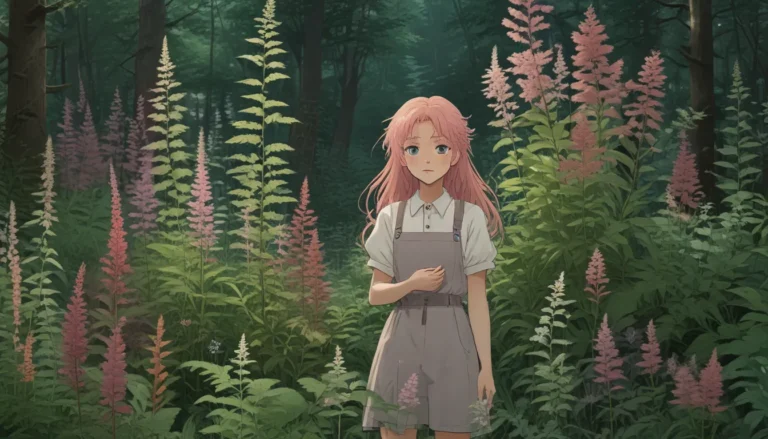The Ultimate Guide to Overwintering Hot Pepper Plants

As the days get shorter and the summer heat starts to fade, many gardeners find themselves facing the dilemma of what to do with their beloved hot pepper plants during the winter. If you’re like me, you’ll miss the fresh taste of homegrown peppers when the season ends.
While some gardeners prefer to treat hot peppers as annuals and start new plants from seeds every year, there’s another option that allows you to enjoy your favorite peppers year after year – overwintering.
In this comprehensive guide, I’ll walk you through everything you need to know about overwintering hot pepper plants. From why you should consider overwintering to how to prepare your plants for the winter months, I’ve got you covered.
So grab a cup of tea, settle in, and let’s dive into the wonderful world of overwintering hot pepper plants!
Why Overwinter Hot Peppers?
Hot peppers, a tropical and subtropical perennial species in the Capsicum genus, are frost-tender plants that need specific conditions to thrive. When temperatures drop below 60°F and the days become shorter, hot peppers start to go dormant and shed their leaves. If temperatures fall below 35°F, it can be fatal for the plant.
While in tropical climates hot peppers can fruit year-round, in cooler locations with proper preparation, they can be coaxed into dormancy for the winter and bounce back in the spring. However, not all plants will survive the overwintering process due to various factors such as lack of nutrients or exposure to extreme temperatures.
When overwintered successfully, hot pepper plants can have a head start in the next growing season, allowing them to fruit earlier than newly planted seedlings. This advantage is particularly beneficial for long-season “super hot” peppers, such as ghost peppers, which tend to fare better during the overwintering process.
Keep in mind that overwintering hot pepper plants requires some effort and attention, but the rewards of a bountiful harvest in the following season make it worth the work.
How to Prepare Your Hot Peppers for Winter
Pot Them Up
If you’re growing hot peppers in the ground, you’ll need to pot them up before winter sets in. Follow these steps to ensure a smooth transition for your plants:
- Before nighttime temperatures reach below 55-60°F, carefully dig up your plants without damaging the root ball.
- Place the plants in clean pots with well-draining potting soil, ensuring the pot is slightly larger than the root ball.
- Water the plants thoroughly and move them to a sunny, sheltered spot for up to a week to acclimate.
Prune
Pruning your hot pepper plants before winter is essential to encourage healthy growth in the next season. Follow these pruning tips:
- Inspect the plants for any signs of pests or diseases and treat them accordingly.
- Remove all fruits – ripe and unripe – from the plant before pruning.
- Trim the plants based on size: smaller plants should be pruned by two-thirds, while larger ones can be pruned more severely.
- Aim to keep three to five “V” shaped branches on the plant, cutting down to the first leaf node on each branch.
Fertilize and Mulch
Applying fertilizer before winter can help set your hot pepper plants up for a successful growing season ahead. Follow these steps to fertilize and mulch your plants:
- After pruning, apply a slow-release balanced fertilizer, such as 5-5-5 (NPK), to the top of the soil in your containers.
- Water the plants thoroughly to help the fertilizer settle in.
- Consider adding a layer of mulch, such as chopped leaves or straw, to keep the roots warm and prevent the soil from drying out completely.
Winter Care
Taking care of your hot pepper plants during the winter months doesn’t require much effort but needs some attention to ensure their survival. Follow these tips for winter care:
- Place the potted plants in a shed or indoor location with some natural light.
- Check the plants every two to three weeks and water sparingly, making sure the soil doesn’t dry out completely.
- Look out for pests, such as aphids, and treat them with neem oil or insecticidal soap if needed.
Prepare for Spring
As the temperatures start to warm up in early spring, it’s time to get your hot pepper plants ready for the growing season ahead. Here’s how to prepare your plants for spring:
- Gradually move the plants to a location with more light as the days get longer, but avoid exposing them to overnight temperatures.
- Increase watering gradually as you see signs of new growth on the plants.
- Once all risk of frost has passed, harden off the plants in a protected location before setting them outdoors permanently.
By following these steps, you can ensure that your hot pepper plants are well-prepared for the coming season, ready to provide you with a bountiful harvest.
Keep the Heat Year after Year
Overwintering hot pepper plants may seem like a daunting task, but the results – a thriving plant that fruits earlier in the season – make it a rewarding endeavor. By following the steps outlined in this guide and giving your plants proper care and attention, you can enjoy your favorite hot peppers year after year.
Have you tried overwintering hot pepper plants before? Are you inspired to give it a go this season? Let me know in the comments below!
For more tips on growing peppers, check out these helpful guides:
- How to Plant and Grow Serrano Peppers
- Grow Crunchy, Sweet Bell Peppers in Your Backyard
- How to Grow Ornamental Peppers
Remember to stay patient and attentive to your plants’ needs throughout the winter, and you’ll be rewarded with a thriving pepper garden in the next season. Happy gardening!





